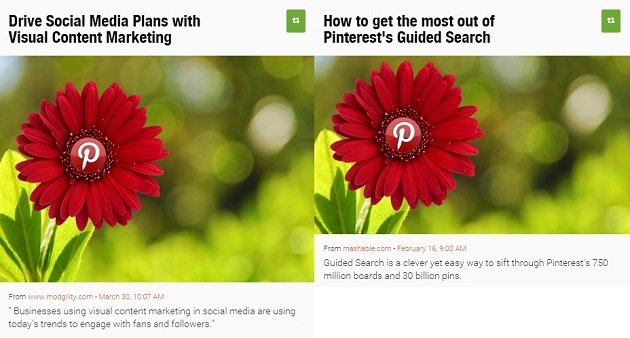Digital marketing is moving more toward the visual. Just take a look at the social landscape today. From blogs to social posts, consumers today are choosing to share and engage with content that has high visual appeal over traditional text-based content. Just take a look at these statistics:
- 63% of social media is now made up of images; 32% is made up of video.
- Tweets with photos received 35% more retweets than those without; tweets with video receive 28% more retweets than those without.
- Facebook posts with photos get 53% more Likes, 104% more comments and 84% more click-throughs.
- 87% of Internet users watch business-related videos on YouTube at least once a week.
Visual marketing provides a complement to more traditional content marketing methods. Text-based content won’t be going away anytime soon – but with fewer consumers taking the time to read through all your site’s content, you need an alternative way to capture their attention and engage them in your brand. Visual content provides that alternative.
Visuals are an easy way for users to understand your message at a glance. They also offer a slight advantage over text. The human brain processes images faster than words – almost 60,000 times as fast. Our brains retain visual information better, too. One study found that after three days, participants retained only 10-20% of written information, but 65% of visual information.
If you’re new to the visual marketing, here are a couple of basic tips to get going.


1. Don’t just use stock photography.
One of the biggest challenges with creating visual content is often lack of resources. Most of us don’t have professional photographers and designers with ample amounts of free time at our disposal. When resources are limited, it can be difficult to create unique, compelling visual content. But don’t just resort to good old stock photography. Stock photos can be limited in scope and style, and it can be hard to stand out from the pack when you’re using the same photos as everyone else.
If you have limited resources and stock photography is your best option, get creative. Good news is, you don’t even need Photoshop! The web offers a wide range of free, easy tools that you can use to make original graphics. Take advantage of programs like Canva, which allows you to upload stock images and add text and other basic shapes to make your own original image; Infogr.am, which allows you to create your own infographics; or Pixlr, a program that offers capabilities similar to Photoshop, but is both free and easier to use.


2. Add images to tweets.
If adding images to tweets greatly increases the chance of retweets and engagement, then this one is a no-brainer. Adding an image to your tweet is an easy way to increase the shareability of that post – and it only takes a couple extra clicks.


3. Don’t forget about video.
If you’re struggling to master image and graphic creation, the thought of taking on video is probably daunting. While video does require more effort and mastery than images, it’s definitely worth the investment of time.
In a white paper released earlier this year, Cisco predicts that by 2019, video will account for almost 75% of all mobile data traffic. Business Insider Intelligence also predicts that mobile ad spend will grow 43% by 2018, and that display and video ad will be the fastest-growing mobile ad formats, with mobile video ad revenue growing 73% by 2018. So if the future is in video, there’s no time like the present to master it.
Start small. There’s no need to pressure yourself into creating professional-made full-length videos right off the bat. Experiment with short videos on platforms such as Vine and Instagram, which can be shared across other social media channels. Twitter also now allows you to capture video, edit clips and share the finished product within its app. You can also experiment with tools like PowToon, which allows you to create short animated videos suitable for a product demo.
4. Mix it up – but share consistently across channels.
Although visuals can be a great way to promote your brand, it’s important to have some variety in what you post. Mix it up between sharing images, graphics, infographics and videos – and it’s still okay to sprinkle some traditional text-based posts in there! Creating a content calendar will help you plan ahead, see where you need to devote resources and better track how your efforts are playing out.
When sharing visual elements on social media, be sure to share equally across the different channels, too. For example, it’s important to use the same cover image across the different channels to strengthen brand identity and enhance user experience.
5. Be bold!
Take some risks when creating visual content – trial and error is how we learn, so it’s okay to think outside the box and try different ideas – and it’s okay to create some duds in the process. If the idea is to stand out, playing it safe won’t get the big results.
Looking to increase your visual content’s reach through paid social media marketing? Contact our full-service advertising agency in Kansas City to learn more about our content strategy and distribution services.

